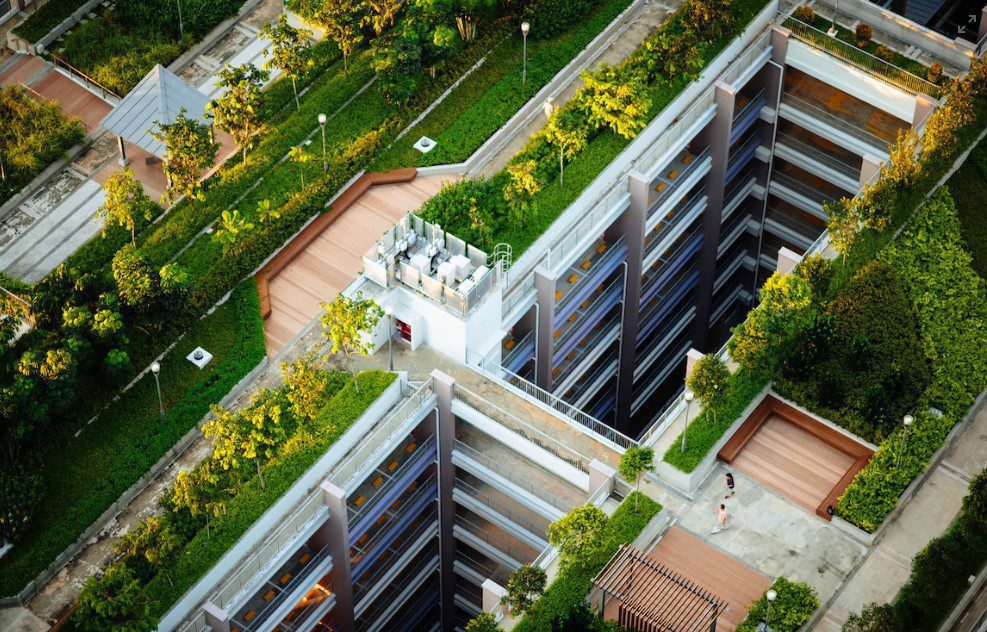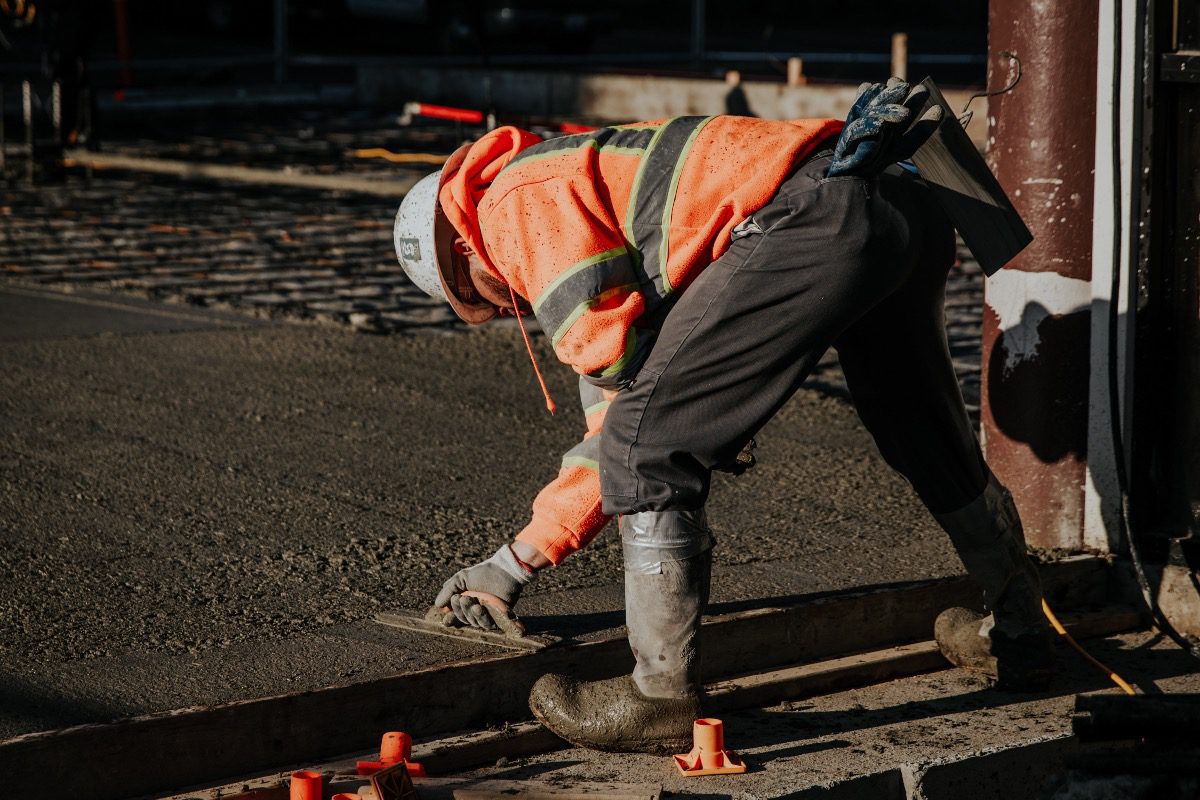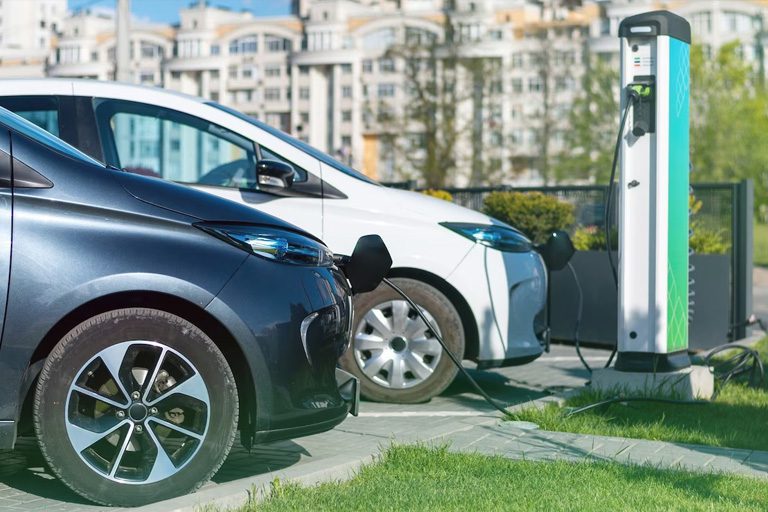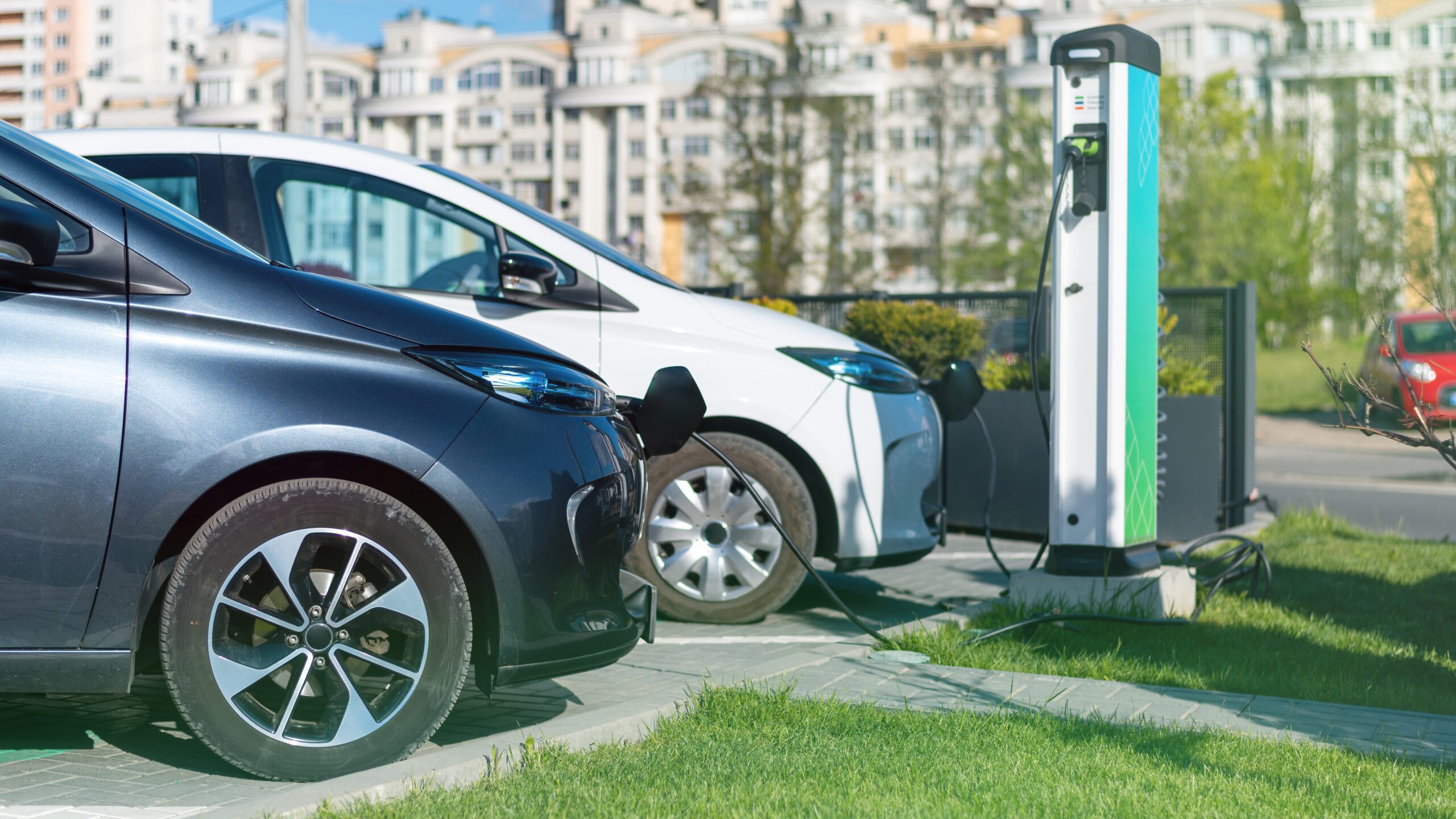Table of Contents
Decarbonisation refers to the process of reducing or eliminating carbon emissions from various sectors such as power generation, transportation, and buildings. In the context of buildings, decarbonisation is achieved by reducing the amount of energy consumed by buildings and shifting to renewable energy sources. The goal of decarbonising buildings is to reduce greenhouse gas emissions, mitigate the impacts of climate change and build more eco-friendly buildings.
Significance of Decarbonising Buildings in India
The International Energy Agency (IEA) predicts that India will account for a quarter of the global energy demand growth by 2040, as it is one of the fastest-growing economies in the world, and its energy demand is expected to grow significantly in the coming years. This rapid growth in energy demand poses a significant challenge in terms of carbon emissions, as the majority of India’s energy comes from fossil fuels.

Decarbonising buildings is crucial for India’s transition to a low-carbon economy. Buildings account for a significant share of energy consumption and greenhouse gas emissions in India. According to the Indian Green Building Council (IGBC), buildings account for around 30% of India’s total energy consumption and 40% of its greenhouse gas emissions. Therefore, decarbonising green eco-buildings is essential for reducing India’s carbon footprint and achieving its climate goals.
Overview of the emerging technologies that are contributing to decarbonisation
Several emerging technologies are contributing to decarbonising buildings in India. These technologies are aimed at reducing energy consumption and shifting to renewable energy sources. Some of the emerging technologies include:
- Cool roofs – Cool roofs are designed to reflect sunlight and reduce heat transfer, thus reducing the amount of energy needed to cool buildings.
- Geothermal heating and cooling – Geothermal systems use the earth’s natural heat to provide heating and cooling for buildings, reducing the need for traditional HVAC systems.
- Solar power – Solar power is an excellent source of renewable energy for buildings. Solar panels can be installed on rooftops and generate electricity to power buildings.
- Energy-efficient appliances – Energy-efficient appliances such as refrigerators, washing machines, and air conditioners are designed to consume less energy, reducing the overall energy demand of buildings.
- Smart building systems – Smart building systems use sensors, automation, and data analytics to optimise building performance, reducing energy consumption and improving occupant comfort.
These emerging technologies are playing a significant role in decarbonising eco-friendly buildings in India, and their adoption is expected to grow in the coming years. Let us discuss some of these technologies in more detail.
Cool Roofs
Cool Roofs are designed to reflect sunlight and reduce the amount of heat absorbed by the building. These roofs are made of materials that have high solar reflectance and thermal emittance properties. They reflect the sun’s rays back into the atmosphere, thereby reducing the amount of heat that is transferred into the building. The materials used in cool roofs are often light in colour, such as white or light grey, as they are better at reflecting sunlight than darker colours.
Benefits of Cool Roofs in Decarbonising Buildings in India
Cool roofs have numerous benefits in decarbonising buildings in India. By reducing the amount of heat absorbed by a building, they help to reduce the amount of energy required to cool it down. This can lead to a significant reduction in energy consumption and a subsequent decrease in carbon emissions. In addition, cool roofs can also help to mitigate the urban heat island effect, which can have a significant impact on the health and well-being of residents.
Examples of Cool Roofs in India
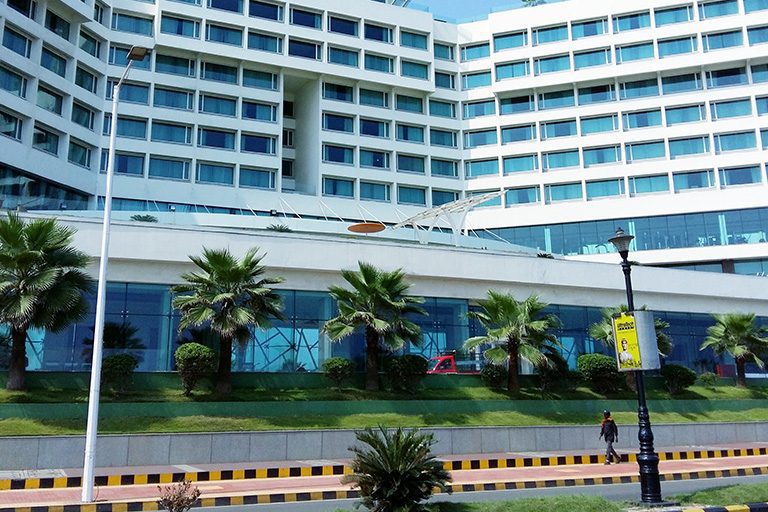
Several examples of cool roofs can be found in India, particularly in cities such as Delhi, Mumbai, and Chennai. For instance, the Indian Green Building Council’s office in Hyderabad has a cool roof that reflects up to 70% of sunlight. Similarly, the Indian Institute of Technology Bombay (IITB) has installed cool roofs on several buildings on its campus, which have helped to reduce indoor temperatures by up to 5°C. In addition, many state governments in India have implemented cool roof programs to encourage the adoption of this technology in residential and commercial buildings. For example, the Tamil Nadu government’s Cool Roofs program aims to provide cool roofs to one million households in the state.
Overall, cool roofs are a promising technology that can help to reduce the carbon footprint of buildings in India. By reflecting sunlight and reducing heat absorption, they can significantly reduce energy consumption and improve the overall sustainability of buildings.
Storm Water Management
Stormwater management is a process that involves the collection, treatment, and disposal of rainwater runoff. In urban areas, the water cannot penetrate the soil, and it is diverted into the stormwater system. The stormwater system takes the water to a stormwater treatment facility, where it is treated before being released into the environment.
Benefits of Storm Water Management in Decarbonisation:
In India, stormwater management is a crucial component of decarbonising buildings. Proper stormwater management reduces the amount of water that runs off the streets and into the environment. The benefits of stormwater management include:
- Reduced water usage: By collecting and reusing rainwater, less water is needed for irrigation and other purposes.
- Improved water quality: Stormwater management systems can filter out pollutants and debris, improving the quality of the water that is released into the environment.
- Reduced flood risk: By diverting and storing stormwater runoff, the risk of flooding is reduced.
- Reduced carbon footprint: By reducing the amount of water needed for buildings, energy usage is reduced, which leads to a lower carbon footprint.
Examples of Storm Water Management Systems in India
In India, there are several examples of stormwater management systems that are being implemented in buildings. One example is the use of rain gardens. Rain gardens are designed to capture and filter rainwater runoff from roofs and parking lots. The rainwater is then filtered through a natural filtration system, which helps to remove pollutants and debris.
Another example of stormwater management systems in India is the use of green roofs. Green roofs are designed to absorb rainwater, reducing the amount of runoff that is produced. The green roof also helps to reduce the amount of heat that is absorbed by the building, reducing energy usage and the carbon footprint.
Overall, stormwater management is a crucial component of decarbonising buildings in India. By implementing these systems, the amount of water needed for buildings can be reduced, which leads to lower energy usage and a lower carbon footprint.
Geothermal Heating
Geothermal heating is a sustainable heating and cooling technology that uses the earth’s constant temperature to regulate indoor temperatures. It harnesses the heat energy stored within the earth and transfers it to buildings through a network of underground pipes, providing efficient heating in winter and cooling in summer. This technology is gaining popularity in India as a sustainable alternative to traditional heating and cooling systems.
Benefits of geothermal heating in decarbonisation
Geothermal heating has numerous benefits in the decarbonisation of buildings. Firstly, it is a clean and renewable energy source that reduces greenhouse gas emissions, making it a sustainable and eco-friendly solution. Secondly, geothermal heating systems require minimal maintenance, reducing operational costs and increasing energy savings. Finally, geothermal heating systems provide efficient heating and cooling throughout the year, improving indoor air quality and occupant comfort.
Examples of geothermal heating systems in India
One example of geothermal heating systems in India is the installation of a geothermal heat pump system at the Central Institute of Agricultural Engineering, Bhopal. The system has been installed to provide sustainable and efficient heating and cooling to the institute’s buildings. Another example is the installation of geothermal systems in several residential and commercial buildings in Bengaluru. These systems have helped reduce energy costs and greenhouse gas emissions while providing efficient heating and cooling solutions.
Geothermal heating is a promising technology that has the potential to revolutionize the way we heat and cool eco-friendly buildings in India. Its sustainable and eco-friendly nature makes it an attractive option for reducing greenhouse gas emissions and combatting climate change while improving indoor comfort and air quality.
Solar Power
Solar power is a renewable energy source that uses sunlight to generate electricity. The process involves using solar panels to convert sunlight into direct current (DC) electricity, which is then converted into alternating current (AC) electricity through an inverter. This energy can then be used to power homes and eco-friendly buildings.
Benefits of solar power in decarbonisation
One of the key benefits of solar power is that it is a clean and sustainable source of energy, with no emissions of greenhouse gases. This makes it a crucial technology for decarbonisation efforts in India. By harnessing the power of the sun, buildings can reduce their dependence on fossil fuels and significantly lower their carbon footprint.
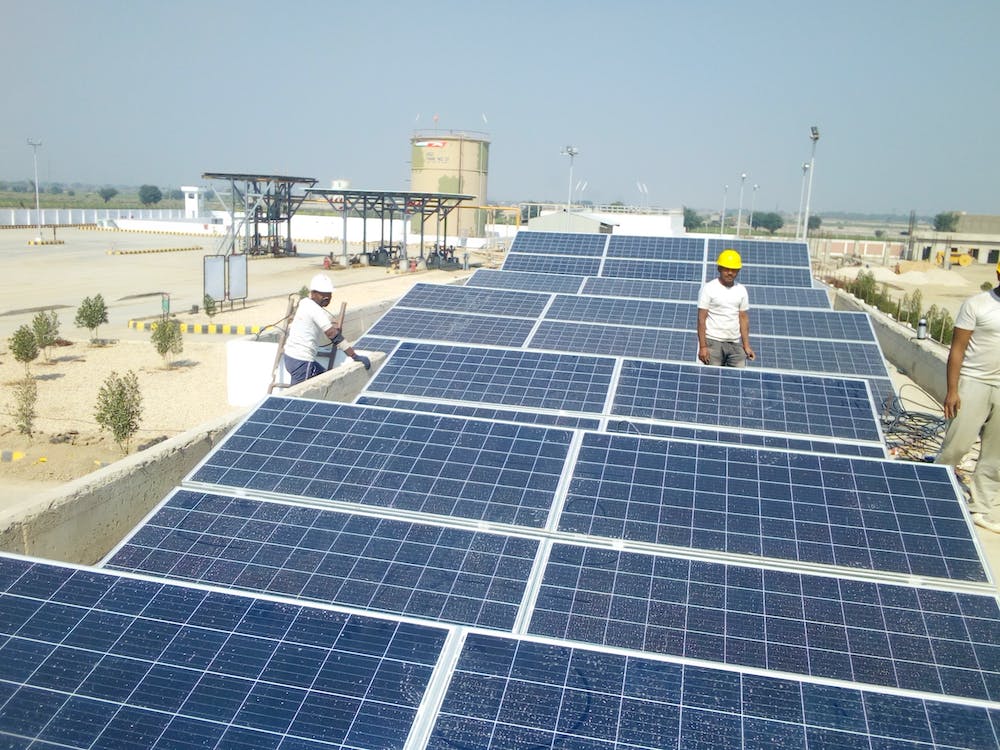
In recent years, India has made significant strides in the adoption of solar power systems. In 2020, the country surpassed 35 GW of installed solar capacity, making it the third-largest solar market in the world. Some notable examples of solar power systems in India include the world’s largest solar park in Karnataka, the world’s first solar-powered airport in Kochi, and the solar-powered railway station in Guwahati.
Moreover, with the government’s push towards renewable energy, there are now several incentives available to promote the adoption of solar power systems. The government has introduced a net-metering policy, which allows building owners to generate their own electricity and sell the excess power back to the grid. There are also subsidies and tax benefits available for those who invest in solar power systems.
Solar power is a crucial technology in decarbonising buildings in India. Its clean and sustainable nature, coupled with the incentives available, make it a viable option for building owners looking to reduce their carbon footprint and contribute towards a more sustainable future.
Electrochromic Smart Glass
Electrochromic Smart Glass is an innovative technology that allows the user to control the amount of light and heat that passes through the glass. It is also known as electronically switchable glass or dynamic glass. The technology works by changing the tint of the glass from clear to dark using electricity. This means that the glass can switch from being transparent to translucent, which helps in regulating the amount of sunlight that enters the building.
Benefits of Electrochromic Smart Glass in Decarbonisation
Electrochromic Smart Glass offers many benefits in terms of decarbonisation. First and foremost, it can help in reducing the amount of energy required for heating, ventilation, and air conditioning (HVAC) systems. By allowing natural light into the building, it reduces the need for artificial lighting, which in turn reduces energy consumption. Secondly, it can help in reducing the load on HVAC systems during hot weather conditions. By blocking excess sunlight, it can reduce the amount of heat that enters the building, thereby reducing the need for air conditioning.
Furthermore, Electrochromic Smart Glass can help in reducing the carbon footprint of buildings by reducing energy consumption, it reduces the number of greenhouse gases emitted by power plants that generate electricity. Additionally, it can help in creating a sustainable and eco-friendly environment by reducing the need for blinds or curtains, which are often made of non-biodegradable materials.
Examples of Electrochromic Smart Glass in India
One example of Electrochromic Smart Glass being used in India is at the new Terminal 2 of the Chhatrapati Shivaji International Airport in Mumbai. The terminal has a huge glass façade that is made up of Electrochromic Smart Glass. The glass automatically adjusts its tint according to the amount of sunlight entering the eco-friendly building, thereby reducing the need for artificial lighting and air conditioning.
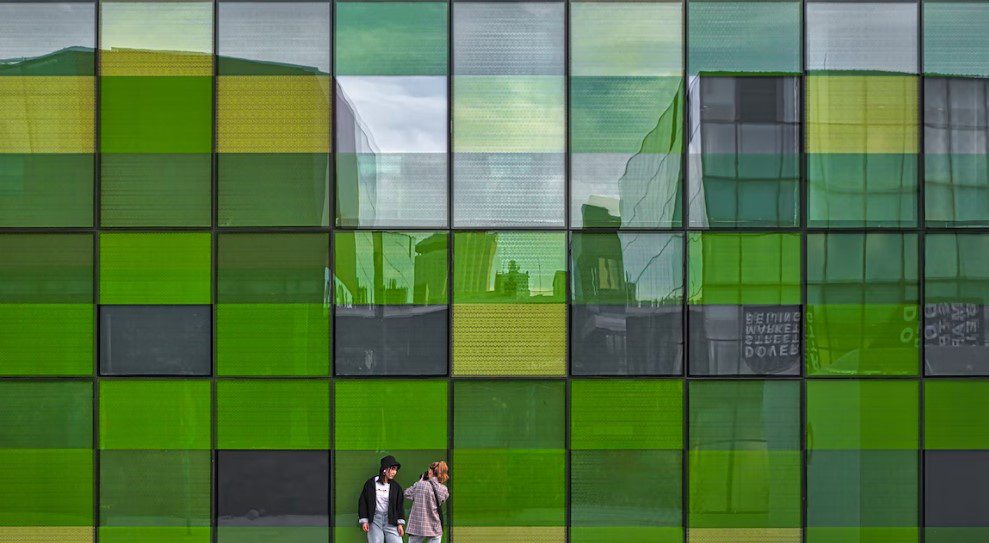
Another example is the Sardar Vallabhbhai Patel International Airport in Ahmedabad, which also uses Electrochromic Smart Glass. The glass is used in the airport’s façade and skylights, helping to reduce energy consumption and create a sustainable environment.
Electrochromic Smart Glass is an emerging technology that has immense potential for decarbonisation. By regulating the amount of light and heat that enters the building, it reduces the need for artificial lighting and air conditioning, thereby reducing energy consumption and the carbon footprint of eco-friendly buildings.
Smart Appliances
Smart appliances are a new breed of devices that integrate advanced technologies to communicate and interact with users, making them more convenient, efficient and sustainable. These devices are designed to optimize energy use, reduce waste and minimize carbon footprint, while providing users with enhanced functionalities, convenience, and flexibility. Smart appliances are typically equipped with sensors, processors, and connectivity features that allow them to collect, analyze, and transmit data to the cloud or local networks. This data can then be used to adjust the appliance’s performance, monitor its status, and provide feedback to users.
Benefits of smart appliances in decarbonisation
Smart appliances have several benefits in decarbonizing buildings. First, they are highly energy-efficient and can help reduce energy consumption and costs by up to 50%. By optimizing energy use and minimizing waste, smart appliances can significantly reduce carbon emissions and contribute to a more sustainable future. Second, smart appliances are designed to be highly reliable, durable, and low maintenance, which reduces the need for repairs, replacements, and disposal. This, in turn, reduces the amount of waste and pollution generated by the appliance industry. Third, smart appliances can provide users with real-time feedback on their energy use and help them adjust their habits and behaviours to reduce their carbon footprint.
Examples of smart appliances in India
Several companies in India are developing and deploying smart appliances for decarbonizing eco-friendly buildings. One such example is Tata Power, which has launched a range of smart home appliances, including air conditioners, refrigerators, and washing machines. These appliances are equipped with advanced features such as smart sensors, energy-efficient compressors, and connectivity options that allow users to monitor and control them remotely. Another example is LG Electronics, which has introduced a range of smart home appliances such as smart refrigerators, air conditioners, and washing machines, that are designed to optimize energy use, reduce waste, and enhance convenience for users. Other notable players in the Indian smart appliance market include Godrej Appliances, Haier Appliances, and Whirlpool India.
Innovative Solutions for Decarbonising Buildings in India
As the world races towards a more sustainable future, innovators are constantly seeking new and creative ways to reduce carbon emissions. India, in particular, has become a hub for innovation in the field of decarbonisation, with many groundbreaking solutions emerging from the country. In this section, we will explore some of the most innovative solutions for decarbonising buildings in India.
1. Agrocrete
Agrocrete is a building material that is made from a mix of agricultural waste and cement. This material is not only eco-friendly, but it also has a lower carbon footprint than traditional concrete. The use of agricultural waste as a building material also helps to reduce the amount of waste that ends up in landfills.
2. Geopolymer Concrete Block
Geopolymer concrete is another alternative to traditional concrete that has a lower carbon footprint. It is made by combining fly ash and an alkaline solution, which results in a chemical reaction that produces a solid material. This concrete has a high compressive strength and is durable, making it an ideal material for eco-friendly construction.
3. Concrete Prototyping
Concrete prototyping is a method of constructing buildings that involves using 3D printing technology to create concrete components. This method allows for the creation of complex shapes and eco-friendly house designs that would be difficult or impossible to achieve with traditional construction methods. This results in less waste and more efficient use of sustainable materials for eco-friendly buildings.
4. Minion Energy Management
Minion Energy Management is a software solution that helps to optimise energy usage in green eco-buildings. It uses artificial intelligence to monitor and control energy usage in real time, which can help to reduce energy waste and lower carbon emissions.
5. Carbon Tile
Carbon tiles are tiles made from carbon fibre that can be used for flooring and other applications. These tiles are not only durable and lightweight, but they also have a lower carbon footprint than traditional tiles made from materials like ceramic or stone.
6. Waste to Building Material
Waste to building material is a process that involves converting waste materials into eco-friendly building materials. This can include everything from plastic waste to industrial waste. By using waste materials as eco-friendly building materials, the amount of waste that ends up in landfills is reduced, and the carbon footprint of eco-friendly construction is lowered.
7. AVATAR Small Wind Turbine
The AVATAR small wind turbine is a compact and efficient wind turbine that can be used to generate electricity in eco-friendly buildings. It is designed to be mounted on rooftops and can generate electricity even in low-wind conditions. By using wind power, green eco buildings can reduce their reliance on fossil fuels and lower their carbon emissions.
Innovative solutions like these are crucial in the fight against climate change, and India is leading the way in developing new and exciting ways to decarbonise buildings. By adopting these solutions and supporting further innovation, we can work towards a more sustainable future for all.
Challenges in the Decarbonisation of Buildings in India
The decarbonisation of buildings in India is a crucial task that requires significant efforts and collaboration from various stakeholders. Despite the availability of emerging technologies and innovative solutions, there are several challenges that impede the progress of decarbonisation in India. These challenges can be broadly classified into technical, financial, and policy-related issues.
- Lack of Awareness: One of the primary challenges in the decarbonisation of buildings in India is the lack of awareness among stakeholders, including building owners, developers, and policymakers. Many are still unaware of the benefits of decarbonisation and the available technologies.
- High Initial Investment: The high initial cost of implementing decarbonisation technologies is another significant challenge. Building owners are often hesitant to invest in these technologies due to their high cost, and the returns on investment are not immediate.
- Limited Financing Options: Limited financing options for decarbonisation projects, especially for small and medium-sized buildings, is a significant challenge in India. There is a lack of appropriate financial instruments and incentives to support the adoption of decarbonisation technologies.
- Lack of Skilled Workforce: The lack of a skilled workforce with the necessary technical knowledge and expertise in emerging technologies is a challenge in the decarbonisation of buildings in India. There is a need for specialized training programs to bridge the skill gap.
- Regulatory Barriers: Inadequate or non-existent regulatory frameworks to support the adoption of decarbonisation technologies, including building codes and standards, is a significant challenge in India.
- Lack of Local Manufacturing Capabilities: India has limited local manufacturing capabilities for decarbonisation technologies, which leads to a reliance on imports, increasing the cost of these technologies.
while India has made significant progress in decarbonising its buildings, several challenges continue to hinder the adoption of emerging technologies and innovative solutions. Addressing these challenges requires a collaborative effort from various stakeholders, including policymakers, building owners, investors, and technology providers.

In conclusion, the emergence of various technologies has provided solutions for the decarbonisation of buildings in India. Cool roofs, stormwater management, geothermal heating, solar power, electrochromic smart glass, and smart appliances are some of the technologies that have been implemented with promising results. Additionally, innovative solutions such as Agrocrete, Geopolymer Concrete Block, Concrete Prototyping, Minion Energy Management, Carbon Tile, Waste to Building Material, and AVATAR Small Wind Turbine are also being developed and tested.
Implementing these technologies in India is crucial in the country’s journey towards a sustainable future. Decarbonisation can reduce the carbon footprint of eco-friendly buildings and help achieve energy efficiency, creating a healthier and more comfortable environment for occupants. Moreover, it can contribute to achieving the country’s sustainable development goals and reduce the effects of climate change.
Despite the benefits of decarbonisation, there are still several challenges that need to be addressed, such as lack of awareness, limited availability of resources, and inadequate policies and regulations. However, the prospects for decarbonisation in India are promising, with increasing support from the government and private sectors.
In summary, the implementation of decarbonisation technologies in eco-friendly buildings is a crucial step towards a sustainable future for India. By adopting these technologies and addressing the challenges, India can pave the way for a greener and cleaner future.


